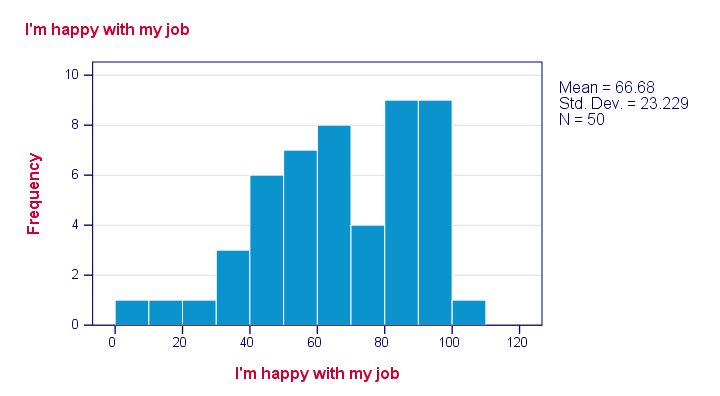

A (“Alphanumeric”) is the usual format for string variables.Most of them speak to themselves, except for the first two variables: One or more letters indicate the format family. SPSS variable formats consist of two parts. SPSS distinguishes print and write formats but we don't bother about this distinction. Part of the result is shown by the screenshot below. Determining SPSS Variable FormatsĪs we saw earlier, “Type” under variable view shows a confusing mixture of variable types and formats. These ways of displaying data values are referred to as variable formats. However, values such as “2” sure don't look like numbers, do they? This is because SPSS can display numbers in very different ways. Regarding these data, we stated earlier that is a string variable and through are numeric variables and contain only numbers. We'll briefly describe the kinds of variables we see. Let's now have a look at the data in data view as shown the screenshot below. The way they are shown here among the actual variable types (string and numeric) is one of SPSS’ most confusing features. SPSS suggests that “Date” and “Dollar” are variable types as well. if Type does not say “String”, you're dealing with a numeric variable.if Type says “String”, you're dealing with a string variable.The icon for “nominal” may contain a tiny “a” which indicates it's a string variable.įor SPSS versions 23 and earlier, we'll inspect our variable view and use the following rule: So how do we know if a variable is string or numeric? In SPSS versions 24 and higher, tiny icons in front of variable names tell us the variable type, format and even measurement level.

For converting metric string variables -holding just numbers- into numeric variables, see SPSS Convert String to Numeric Variable. However, copying them into numeric variables makes sure you'll avoid all trouble. You may get away by leaving such variables as strings. Precisely, UNIANOVA does and ONEWAY does not accept string variables as factors. For example, the independent variable for ANOVA may or may not be a string variable depending on the exact command you use for it. If these are string variables, they may or may not cause trouble. We do sometimes analyze nominal variables with few categories -such as nationality, blood group or profession. Although such variables can be useful, we don't usually analyze them. Only nominal variables with many categoriesĮxamples are names of people, email addresses, passport numbers and so on. However, there's several ways to make a numeric copy of a string variable or reversely. The only way to change a string variable to numeric or reversely is ALTER TYPE.

We'll see in a minute how variable view puts users on the wrong track here. However, numeric variables have several different formats that are often confused with variable types. There are no other variable types in SPSS than string and numeric. You can't do calculations on string variables -even if they contain only numbers.

String variables may contain letters, numbers and other characters.Numeric variables contain only numbers and are suitable for numeric calculations such as addition and multiplication.We encourage you to follow along with this tutorial by downloading and opening computer_parts.sav, partly shown below. This tutorial will put you on the right track. Getting a grip on types and formats is not hard if you ignore the very confusing information under variable view. Understanding SPSS variable types and formats allows you to get things done fast and reliably. SPSS Variable Types and Formats By Ruben Geert van den Berg under Basics


 0 kommentar(er)
0 kommentar(er)
